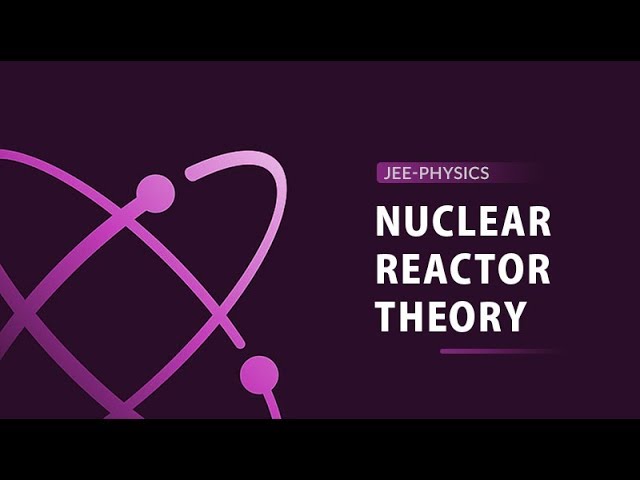Radioactivity is the phenomenon exhibited by an atom’s nuclei due to nuclear instability. In 1896, Henry Becquerel discovered this phenomenon. Radioactivity is a process by which the nucleus of an unstable atom loses energy by emitting radiation. A small amount of Uranium compound was wrapped in black paper and put in a drawer containing photographic plates. These plates were later examined, and the results revealed that there had been an exposure. Radioactive Decay is the term introduced for this phenomenon. The elements or isotopes that emit radiation and go through radioactivity are known as radioactive elements. Learn more about the radioactive decay law in this article.

Due to the radioisotope of the element having an unstable nucleus, the atom particles cannot be bonded since there is no energy. The isotopes constantly decay to stabilise themselves by releasing a significant amount of energy in the form of radiation.
Transmutation is referred to as the process of isotope transformation into an element of a stable nucleus. It can occur both in natural and artificial ways.
Read More: Artificial Transmutation
| Table of Contents |
Types of Radioactive Decay
There are three types, namely:
- Alpha
- Beta
- Gamma.
1. Alpha decay:
When an alpha particle emits its nucleus, the process is called alpha decay. The formula of alpha decay is given as:
\(\begin{array}{l}E=(m_{i}-m_{f}-m_{p})c^{2}\end{array} \) |
Where,
- mi is the initial mass of the nucleus
- mf is the mass of the nucleus after particles emission
- mp is the mass of the emitted particle
The nucleus of helium is taken as the very stable alpha particle. It has a group of two protons and two neutrons. For example, alpha decay of uranium-238 is shown below-
Transmutation is referred to as the process of isotopes transforming into an element of a stable nucleus.
2. Beta Decay:
A beta particle is often referred to as an electron, but it can also be a positron. If the reaction involves electrons, the nucleus sheds out neutrons one by one. Even the proton number increases accordingly. A beta decay process is shown below:
3. Gamma Decay:
The nucleus has orbiting electrons, which indeed have some energy, and when an electron jumps from a level of high energy to a level of low energy, there is an emission of a photon. The same thing happens in the nucleus: whenever it rearranges into a lower energy level, a high-energy photon is shooted out, which is known as a gamma ray.
Top 15 most important and expected questions on nuclei in Hindi

Read More: Alpha Decay
Radioactive Decay Law
In the sample, there is a proportionality between radioactive decay per unit time and the overall number of nuclei of radioactive compounds. We can mathematically quantify the rate of this type of decay through this proportionality.
If N = number of nuclei in a sample and ΔN is the number of radioactive decays per unit time Δt then,
ΔNΔT ∝ N or ΔNΔT = λN
Where, λ is the constant of proportionality ( or radioactive decay constant or disintegration constant).
Also, Δ N reduces the total number of nuclei present in the sample.
According to the convention, this should be termed negative.
After rearranging this,
Integrating both sides will result in,
Here,
N0 represents the original number of nuclei in the sample at a time t0, i.e. t=0.
Applying that in the equation results in;
This further leads to,
This type of decay is exponential.
Calculating the rate of decay,
Substituting Nt in the equation and differentiating it,
Differentiation result is,
R0 here represents the decay rate at the time, t=0.
Substituting the original equation back here,
We get,
The total decay rate R of a radioactive sample is called the activity of that sample which is represented with the unit Becquerel, in honour of its scientist. 1 becquerel = 1 Bq = 1 decay per second Another unit is the curie. 1 curie = 1 Ci = 3.7×1010 Bq
Read More: Gamma Ray
Law Of Radioactive Decay Derivation
According to the radioactive decay law, when a radioactive material undergoes either 𝛼 or β or ℽ decay, the number of nuclei undergoing the decay per unit time is proportional to the total number of nuclei in the given sample material.
The radioactive decay law states that “The probability per unit time that a nucleus will decay is a constant, independent of time”.
It is represented by λ (lambda) and is called decay constant.
The mathematical representation of the law of radioactive decay is:
Where,
N: the total number of nuclei in the sample Δ
N: number of nuclei that undergoes decay
Δt: unit time
Where,
λ: radioactive decay constant, also known as disintegration constant
The change in the sample with respect to the number of nuclei is given as:
Where,
N0: number of radioactive nuclei
t0: arbitrary time
Therefore, eq.4 is the law of radioactive decay.
Watch the video and learn about the theory of nuclear reactor

Stay tuned with BYJU’S to learn more about theories of Radioactive Decay

Comments